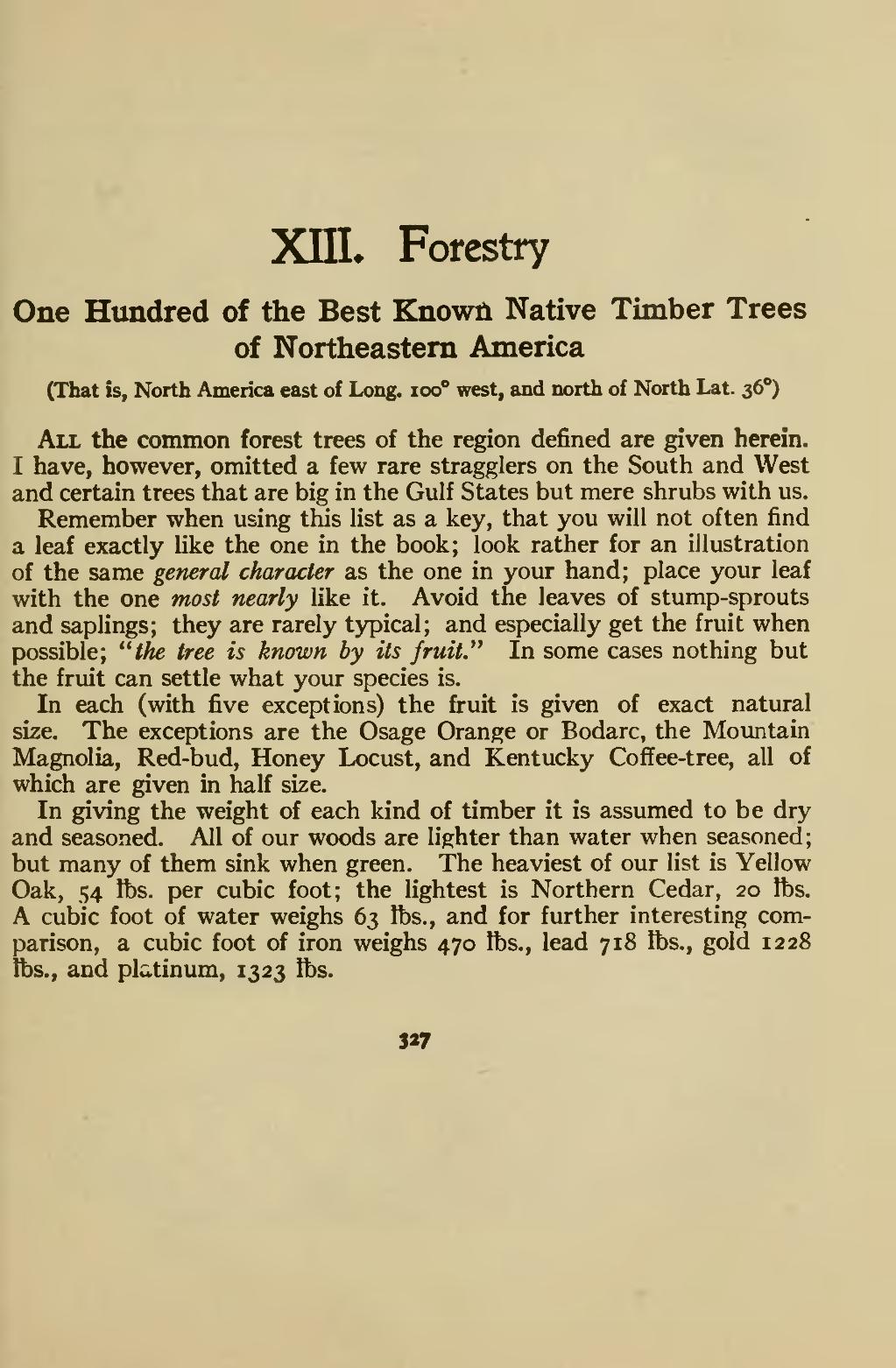XnL Forestry One Hundred of the Best Known Native Timber Trees of Northeastern America (That is, North America east of Long. ioo° west, and north of North Lat. 36°) All the common forest trees of the region defined are given herein. I have, however, omitted a few rare stragglers on the South and West and certain trees that are big in the Gulf States but mere shrubs with us. Remember when using this list as a key, that you will not often find a leaf exactly hke the one in the book; look rather for an illustration of the same general character as the one in your hand; place your leaf with the one most nearly hke it. Avoid the leaves of stump-sprouts and saplings; they are rarely typical; and especially get the fruit when possible; "the tree is known by its fruit.'^ In some cases nothing but the fruit can settle what your species is. In each (with five exceptions) the fruit is given of exact natural size. The exceptions are the Osage Orange or Bodarc, the Mountain Magnolia, Red-bud, Honey Locust, and Kentucky Coffee-tree, all of which are given in half size. In giving the weight of each kind of timber it is assumed to be dry and seasoned. All of our woods are lighter than water when seasoned; but many of them sink when green. The heaviest of our list is Yellow Oak, 54 lbs. per cubic foot; the lightest is Northern Cedar, 20 lbs. A cubic foot of water weighs 63 lbs., and for further interesting com- parison, a cubic foot of iron weighs 470 lbs., lead 718 lbs., gold 1228 lbs., and platinum, 1323 lbs.
Stránka:book 1922.djvu/357
Z thewoodcraft.org
Tato stránka nebyla zkontrolována
